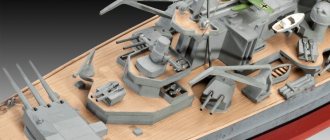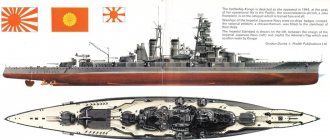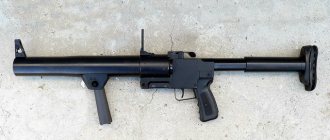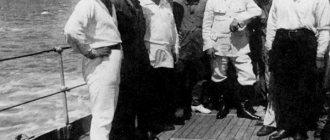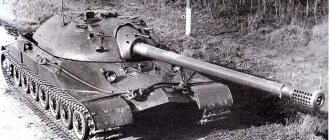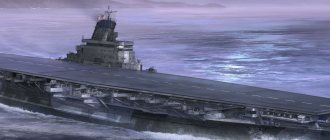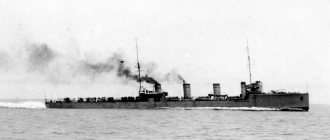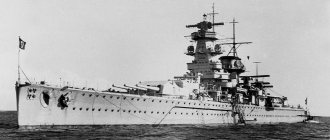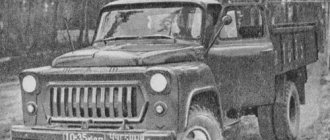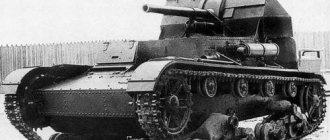Design and construction
According to the Washington Treaty of 1922, the number of battleships in the United States, England and Japan was in the ratio 15:15:9, respectively. With so many basic naval weapons, the Land of the Rising Sun had no chance of winning the war. Secretly from everyone, the Japanese decided to build a new battleship, the displacement of which would significantly exceed all previously agreed upon figures. According to their idea, dreadnoughts built in the early 40s should be superior to any possible American models built in 1947-49.
Not all naval leadership was optimistic about the enormous costs associated with the construction of secret ships. Commander-in-Chief Yamamoto Isoroku compared the usefulness of battleships to a samurai sword - beautiful and intimidating, but unable to stand up to the new aircraft carriers.
Nevertheless, in the fall of 1937, construction of Yamato began. After 5 months, “Musashi” appeared in the ropes. Information about dreadnoughts was classified. Shipyards were closed on all sides. Reconnaissance aircraft could not determine the characteristics of the ships even after they were launched - the Yamatos were covered with special nets. None of the engineers saw the full documentation; each received their own part of the project. The documents deliberately underestimated the caliber of the main gun so that no country in the world would start developing similar guns.
Richelieu | Length 247.9 m
The ranking of the largest battleships in the world opens with the French giant Richelieu , with a length of 247.9 meters and a displacement of 47 thousand tons. The ship was named in honor of the famous French statesman Cardinal Richelieu. A battleship was built to counter the Italian navy. The battleship Richelieu did not conduct active combat operations, except for participation in the Senegalese operation in 1940. In 1968, the supership was scrapped. One of his guns is installed as a monument in the port of Brest.
Construction and armor
The length of the Yamato was 256 meters, the total displacement was 72,810 tons. When planning such a large carrying capacity and parameters, Japan believed that the United States, its main enemy, would never be able to build a similar vessel. According to the Imperial Navy, America limits the size of ships, since in order to move from one ocean to another, it must pass through the rather narrow Panama Canal.
The battleship's hull was pear-shaped with an elongated bow. This design contributed to good seaworthiness, but was vulnerable to enemy torpedoes. Metal elements were fastened with rivets, and welding was used in small areas of the structure.
The power plant included 4 Kampon turbo gear units. Initially it was planned to use a mixed diesel-steam turbine system. However, tests showed that Japanese diesel equipment was unreliable. The speed reached 27.5 knots, the cruising range was 7,200 nautical miles.
The ship's protection was the thickest of any dreadnought in the world. However, the ship was not so safe. Japanese steel had weak characteristics. The side was sheathed with 410 mm sheets. The main caliber towers were armored with 650 mm thick plates. The conning tower was protected by 500 mm steel.
66-centimeter armor of the Japanese battleship Yamato
"Yamato." Heavyweight fight
The pride of the fleet is the minute of turn
The Yamato's tactical circulation diameter at a speed of 26 knots was 640 meters.
An outstanding indicator. Even for a battleship. Battleships were superior in maneuverability to ships of other classes. "Yamato" was considered the best. To turn at full speed, he had 600 meters of space in front along the course (run-out). And the diameter of the turning “loop” was only 2.4 times the length of its body.
For comparison - "Littorio". It is customary for us to admire the creations of Genoese craftsmen for the carefully crafted lines and good seaworthiness of Italian ships. But praise must be objective. The circulation diameter of the Littorio at full speed was 4 times the length of its hull.
Things were even worse for the French Richelieu. On the contrary, the “Americans” were distinguished by very good agility, with the exception of the “South Dakota”. The shape of their stern, powerful machines and the presence of two rudders installed in the propeller jets had an effect.
But no one managed to surpass Yamato.
It is doubly useless to look for competitors among cruisers and destroyers. The long-hulled ships simply could not turn as sharply as the Yamato.
Agility depends on the ratio of dimensions and shape of the contours. All other things being equal, the ship with the smallest hull elongation and the smallest draft (relative to its dimensions) will have the best agility.
The overall completeness ratio can tell you a lot. A dimensionless parameter that gives an idea of the sharpness of the contours and the shape of the underwater part. The ratio of displacement and volume of a parallelepiped, whose sides are given by the length, width and draft of the ship. The higher the value, the better the agility.
Among all types of ships, battleships had the best set of listed indicators. Good agility partly compensated for the size of mastodons. Even in absolute terms, the circulation diameter of battleships was smaller than that of destroyers. And for the latter, a distance of 700–800 meters already corresponded to 7 hull lengths.
Next, the steering gears entered the fight.
The Yamato's steering was not perfect. Both rudders were located in a diametrical plane, one behind the other. On the one hand, this arrangement reduced the likelihood of simultaneous failure (hello to Bismarck!). On the other hand, the rudders were not installed in the propeller jets, which reduced their effectiveness. The area of the main and auxiliary rudders was 41 and 13 square meters. meters. The steering control of the same area was used on other battleships, which were significantly inferior in displacement to the Yamato.
The top illustrations show a model of the battleship Yamato.
At the bottom is the Missouri propeller group. Undoubtedly, the “Japanese” had different ratios of transverse dimensions.
But the difference in hull elongation was not as great as the difference achieved in displacement and maneuverability. The reason for the excellent agility was hidden somewhere inside...
Not like others
One of the mysteries of Yamato is related to its underestimation by the enemy.
Having numerous aerial photographs, the Americans could not recognize that in front of them was the largest ship ever built. 263 meters of length did not indicate in any way that the battleship had a total displacement of 72,000 tons.
The Italian "Littorio" with a displacement of 47 thousand tons had a hull length of 237 m. The even smaller displacement "Richelieu" was 247 m. The German "Bismarck" was 250 meters. And the high-speed Iowa turned out to be seven meters longer than the Japanese heavyweight.
Perhaps it was all about the width of the case?
From a formal point of view, the Yamato remains the widest non-aircraft-carrying warship to this day. The width at midship reached 38 meters. Great importance, but...
Other competitors were not far behind the record holder. The width of the Littorio and Richelieu hulls reached 33 meters. "Bismarck" with its 36 meters was approaching close to "Yamato".
The battleship ambitions of the United States immediately ran into the walls of the Panama Canal. Due to this unfortunate circumstance, they could lengthen in the longitudinal direction, but never grew in width, standing still at around 33 meters.
Iowa crosses the Panama Canal, 2001.
All battleships of the later period were like this. There was nothing obviously outstanding or suspicious about the Yamato's appearance. Its dimensions were within the standard range for battleships.
It's time to dive below the waterline. What did the underwater part of the Yamato look like?
In terms of sediment depth, Yamato was not at all like an iceberg. Even at the stage of drawing up its tactical and technical specifications, requirements were put forward for basing and operations in the coastal waters of numerous Pacific islands. For this reason, Yamato-class battleships have always had a relatively shallow draft (10 meters). This was the draft of European battleships, which were significantly inferior in displacement to the heroes of the Pacific theater of war.
Where did 72 thousand tons come from?
"Yamato" had a higher overall completeness coefficient than all its peers. Fuller lines compared to other battleships. In other words, the bottom of the Yamato corresponded in width to its upper deck, and this situation was observed over a significant length of its hull.
The greater completeness of the contours gave a phenomenal result. This is how 70 thousand tons of displacement, 400 mm armor and an 18-inch main caliber appeared.
Three ships tacked
Where did Yamato get the ability to write out circulations?
Everything is logical here. Relatively short for something like this
The displacement hull with a shallow draft and less sharp contours than its rivals provides a comprehensive explanation of the reasons for the Yamato’s good agility.
What did good agility mean when repelling air attacks or when dodging straight torpedoes of that time? It's probably not worth explaining.
Despite the obvious advantages, it would be premature to give the Yamato the highest score for maneuverability.
The Japanese heavyweight could evade fired torpedoes more deftly than others, but then its advantages became unobvious. A sharp maneuver led to a loss of speed, and the Yamato spent a lot of time restoring it.
12 boilers and 4 turbines (GTZA) provided power on the propeller shafts of 153,000 liters. With. A power plant with such parameters could be considered exceptionally powerful by the standards of European fleets. But this was not enough for the giant Yamato.
Don't think that the Japanese were completely bad. In combat operations, even such slow-moving vehicles as the negotiated Nelsons with a power plant of 45 thousand hp were successfully used. With.
But history also knew other examples. Fast American "battleships" built to counter Japanese line forces.
Nobody knows how fast Iowa turned out. But the two echelons of the main power plant (the dual power plant of conventional aircraft) did not just take up space. Directives from that period have been preserved, from which it is clear that Iowa gained momentum almost three times faster than its predecessors. Acceleration from 15 to 27 knots in seven minutes. A quarter of a million horsepower is a parameter worthy of a nuclear aircraft carrier.
With such dynamics and a tactical circulation diameter of 2.8 hull lengths, the 57,000-ton Iowa snatched the championship title from the hefty clutches of the Yamato.
The Japanese project, it should be noted, was pretty outdated by the last year of the war.
If we exclude from consideration the Iowa and the very advanced battleships that entered service after the end of the war, then at the time of its appearance the Yamato, without a doubt, represented the strongest type of battleship.
Let's do without prolonged applause. But facts are stubborn things. Size mattered.
No matter how much you feed the wolf, the elephant will feed more
It didn't take much to unleash the Yamato's full potential. Sunny tropical day and a distance of ten nautical miles. Conditions for a decisive battle
with the US battlefleet.
The Japanese prepared very carefully for this meeting. We have collected a full arsenal of the necessary funds. Firing range, power of 460 mm ammunition, large deceleration of fuses. The Yamato's ammunition even included a special type of "diving" projectile to hit ships in poorly protected underwater areas.
The retaliatory volleys were supposed to crash against the thick armor of the citadel. The extreme version of the “all or nothing” scheme chosen for the Yamato provided the best protection against rare, but “evil” hits from long distances.
Good agility would also come in handy here.
But nothing was useful.
The battles took place in a variety of situations. The battleships of the United States and Japan engaged in combat three times, but the conditions never corresponded to a duel in daylight. Throughout most of the war, the range of use of battleships was generally not limited to fighting their own kind.
Can the Yamato designers be blamed for creating a highly specialized project?
Before drawing such a conclusion, look again at the number 72,000. Spending such weight on solving a single problem was beyond the power of even Japanese perfectionists.
It is interesting that, having such reserves, the Japanese continued to save weight, fighting for every ton of hull mass. Even visually, the Yamato has a noticeable deflection of the upper deck in the area of the bow towers. And the same bend at the aft end. Such design refinements were made to reduce the freeboard height where possible. Another (purely Japanese technique) was hidden from prying eyes. The armor plates of the citadel performed a load-bearing function and were included in the power set.
The listed measures only strengthened the already considerable combat capabilities.
And specialization in the “general battle” did not in any way affect the other qualities of Yamato.
There were enough reserves for everything
Yamato not only had the thickest armor, but also the shortest citadel of all battleships, occupying 54% of the length of her hull. The extremities (with the exception of the tiller compartments and sections of the upper deck) had no protection at all and could be penetrated by any caliber.
At first glance, this is a crazy design.
But what is obvious even to us was no secret to the creators of Yamato. Why did they “frivolously” leave 46% of the hull unprotected? First of all, because the Japanese project was not similar to any other battleship, with the exception of Iowa. The Yamato's hull had a "bottle" shape with a sharply tapering bow and a short stern. In other words, the size and volume of its extremities was smaller than that of other battleships. And the main volumes of the building were concentrated in the middle part, that is, under the protection of the walls of the citadel.
The Japanese made calculations and obtained the following results: the unsinkability and stability of the Yamato can be ensured even if both ends are flooded.
The “all or nothing” scheme implied the absence of anything outside the citadel on which combat effectiveness could critically depend. The gradual accumulation of damage with the loss of all posts and the flooding of all compartments at the extremities would require a significant number of hits. With equal forces, achieving such a result in battle was considered unlikely. Yamato could also fire back. And not cherry pits.
In practice, none of the warring sides considered firing land mines at the ends as a combat technique, focusing on breaking through the citadel.
There is no need to bore readers with a detailed description of armor protection and its thickness. These figures are present in any source. I will only note that the Yamato’s structural protection included a couple of original elements that its peers had no idea about.
It was easier for air bombs and fired shells to penetrate the engine room by breaking through the main deck of the Yamato than through the mouth of its smokestack. The chimneys were covered with a perforated armor plate 380 mm thick.
Another feature was an underwater armor belt for protection in case of near misses, when a diving “armor piercer” could hit the ship in the underwater part. The Japanese were the only ones who foresaw such a threat and developed protective measures against underflights.
Resistance to underwater explosions
The underwater armored belt was part of the PTZ, but was not the basis of anti-torpedo protection.
The Yamato-class battleships had a full-fledged three-chamber PTZ with a width of 5 meters, according to the highest standards accepted for the class of battleships. The hull of the battleships had a triple bottom throughout, with the exception of the engine and boiler rooms. A fact from maritime history: anti-torpedo protection has never provided complete safety during underwater explosions near the side. As follows from the description of the damage, the compartments located near the point of impact were always destroyed and filled with water. The task of the PTZ was to minimize damage and prevent such egregious cases as the death of the Barham LC.
The size of the ships themselves and their internal structure were of key importance when hit by torpedoes. And the purpose of counter-flooding and drainage of the compartments was to straighten the resulting tilt.
Theoretically, in order to sink a ship on an even keel, it is necessary to exhaust its displacement reserve by 100%, that is, “pour in” tens of thousands of tons of water through the holes. With waterproof compartments, this process can take forever. But if the roll gets out of control, the ship will die in a matter of minutes.
Yamato-class battleships had a double roll straightening system due to counter-flooding of compartments and pumping fuel. Its design capabilities made it possible to adjust the roll to 14 degrees without compromising the combat effectiveness of the ship. The time standard is 5 minutes to take control of the roll and trim that arose when the first torpedo hit. 12 minutes were allotted to eliminate the consequences of the second hit.
Combat steampunk
The significant width of the hull made it possible to place the engine and boiler rooms in four rows.
The internal compartments of the MKO received reliable protection: 80 years ago there were no torpedoes with a proximity fuse that fired exactly under the keel. In terms of the successful location of the MKO, only the Iowa could be compared with the Yamato: its engine and boiler rooms were dispersed along the hull, stretching for as much as 100 meters. In order to deprive the Iowa of power, power supply and any ability to resist, it was necessary to “turn around” almost half of the battleship.
A controversial decision of the Yamato project is the limited use of an electric drive. The Japanese were afraid of bulky switchboards and short circuits, so they used auxiliary steam engines wherever possible. Reality showed that valves and steam lines were also vulnerable to shocks, and the suspension of the boilers made the ship completely helpless.
On the other hand, only complete destruction and flooding of the boiler rooms could stop the operation of all 12 boilers. When it's probably all over. And the fury of the attacks to which the battleships were subjected in their last battle does not allow us to draw accurate conclusions about the superiority or disadvantages of such a solution.
During the war years, battleships of the Allies and Axis countries were repeatedly exposed to mine and torpedo weapons. “Vittorio Veneto”, “Maryland”, “North Caroline”, “Scharnhorst” and “Gneisenau”, the Japanese “Ise”... As practice has shown, capital ships can withstand hits from 1-2 torpedoes relatively easily.
“The consequences of attacks on ships built to the same security standards had the same results.”
The last battle between “Yamato” and “Musashi” does not give any reason for comparison. No other battleship was subjected to such execution. And no one could survive taking 10+ hits below the waterline.
One thing is certain: due to a larger displacement reserve and a more sophisticated design, Yamato-class battleships could withstand more than all their peers.
American pilots noted in their reports a noticeable decrease in the speed of the Musashi only after the sixth torpedo hit.
But the commander of the Shinano did not feel a threat after being hit by 4 torpedoes, continuing to steer the ship on the same course without reducing speed. The denouement came six hours later. If Shinano had been completed and had sealed bulkheads, it might have reached the Kure naval base.
Those ships are long gone. But we can talk about their weapons next time.
And in conclusion, let us recall these words:
The best choice if you have a limited budget is Richelieu. The glamor of high technology - Vanguard and Iowa.
For a breakthrough at any cost - only Yamato!
Armament of the battleship Yamato
Much attention was paid to heavy weapons. All developments were carried out in the strictest secrecy. No country in the world should have known what equipment would be installed on the Yamato dreadnoughts.
- The main caliber included three three-gun systems with a caliber of 460 mm (type 94). The maximum range of the projectile was 42 km. To control the fire, an electromechanical computer, 5 rangefinders, a tracking device and other elements were used. During daylight hours, heavy artillery showed good performance, but during dark times, the fire control system worked poorly. In the new part, the guns were placed on the towers in a linear-elevated pattern, the third group of artillery was located at the stern.
- The average caliber consisted of 12 155 mm guns mounted on 3 four-gun turrets. Each superstructure was equipped with a rangefinder. The guns were intended to fire at enemy shores or enemy ships. They were subsequently replaced by 127 mm anti-aircraft artillery.
- Air defense consisted of 6 twin 127-mm installations, 8 25-mm three-gun systems, 2 13.2-mm two-gun machine guns. During the war, it became clear that the main striking force was aircraft, so the number of 127-mm anti-aircraft guns designed for long-range action was doubled.
- Aviation included 7 seaplanes and 2 catapults.
Battleships of the Littorio / Vittorio Veneto class
After the First World War, Italy experienced difficult times. There was not enough money to build new battleships. Therefore, the release of new ships was postponed in every possible way for financial reasons. Italy began to develop a modern battleship only after the laying of powerful and fast battlecruisers of the Dunkirk class in France, its main rival in the Mediterranean, which completely devalued the old Italian battleships.
0
The main theater of military operations for the Italians was the Mediterranean Sea, which was historically considered “theirs.” This left its mark on the appearance of the new battleship. If for the British, autonomy and long cruising range were a key factor when developing their own battleships, then the Italian designers could sacrifice it for the sake of increased firepower and armor. The lead "Littorio" and "Vittorio Veneto" were larger than the "King George" - their total displacement was about 45 thousand tons with a length of about 240 meters. The battleships entered service in the spring of 1940. The main battery consisted of nine powerful 15-inch (381 mm) guns in three 3-gun turrets. The Italians took the path of maximally boosting old guns of a similar caliber, increasing the barrel length from 40 to 50 calibers. As a result, Italian guns turned out to be record holders among 15-inch guns in Europe in terms of muzzle energy and projectile power, second in armor penetration only to the larger-caliber guns of the American Iowa and Japanese Yamato.
0
The weight of the armor-piercing projectile reached 885 kg with a high initial speed of 870 m/s. For this we had to pay for the extremely low accuracy and accuracy of fire, which is considered the main disadvantage of this type of battleship. Unlike the British, the Italians divided their medium artillery into mine and anti-aircraft artillery. Twelve 6-inch (152 mm) guns in four 3-gun turrets were used to combat the attacking destroyers. For firing at aircraft there were twelve 90-mm guns, which were supplemented by 37-mm machine guns. The experience of the war showed the complete inadequacy of the anti-aircraft artillery of Italian battleships, as well as most similar ships of other countries. The air group of the Littorio-class battleships consisted of three seaplanes and one catapult for launching them. The main armor belt was spaced apart and, although not very impressive in thickness, provided protection against 380 mm shells.
0
Battleship Vittorio Veneto
The main power plant produced 130 thousand horsepower and accelerated the Italian battleship to 30 knots. Such a high speed was a great advantage and made it possible to choose the optimal combat distance or even evade the fire of a stronger enemy. The cruising range was quite modest (4.5-5 thousand miles), but quite sufficient for the Mediterranean.
0
Battleship Roma
In total, the Italians managed to launch three battleships of this type; the fourth ship remained unfinished. Throughout World War II, the ships fought and were periodically damaged by British and American aircraft, after which they were repaired and put back into service. As a result, "Vittorio Veneto" and "Littorio" were transferred after the war to the UK and the USA, respectively, where they were cut up in the mid-1950s. The third battleship, Roma, met a sadder fate. After the surrender of Italy, the Germans sank it with Fritz-X guided bombs so that the ship would not fall to the Allies. Thus, the beautiful and graceful Italian battleships were never able to gain military glory.
Service
In the summer of 1939, the first Yamato-class dreadnought was launched. After completion of work and testing, in December 1941, the battleship was put into service. During the battle near Midway Atoll (June 1942), she was the flagship, but did not actually take part in the battle, since she was 300 miles from her own aircraft carriers.
Musashi entered service in August 1942. Two years later, both battleships took part in the Battle of the Mariana Islands as part of an aircraft carrier force. The ships opened fire on the aircraft. It later turned out that they fired at their own planes. Fortunately, no aircraft were damaged.
In October 1944, the US Navy took up positions off the coast of the Philippines. For Japan, this meant cutting off sources of oil and other raw materials. Having already lost several aircraft carriers by this time, the command decided to make battleships the main striking force. During the next battle, all efforts of the US fleet were aimed at destroying the Musashi. Submarines fired torpedoes, aircraft dropped bombs. Death was inevitable. The dreadnought fought for life for 16 hours, but more than 20 hits to the ship’s hull did their job. The ship capsized and sank.
A few days later, in Leyte Gulf, a Japanese formation led by Yamato noticed an American squadron, which included aircraft carriers. From a 27-kilometer distance, the battleship fired its first shot. A serious struggle ensued, the victims of which were American ships: 1 aircraft carrier and 3 destroyers.
Wisconsin | Length 270 m
The American battleship Wisconsin is ranked 4th in the ranking of the largest battleships in the world. It was 270 meters long and had a displacement of 55 thousand tons. It went into operation in 1944. During World War II, he accompanied aircraft carrier groups and supported landing operations. Was deployed during the Gulf War. Wisconsin is one of the last battleships in the US Navy Reserve. Was decommissioned in 2006. The ship is now docked in Norfolk.
The death of Yamato
After grueling battles, Yamato needed restoration and until January 1945, repair work was carried out on it. At this time, the allied forces were approaching the shores of Japan. In April 1945, the Imperial Japanese Navy was running out of strength. But the sailors fought to the last. On April 6, Yamato, along with 1 cruiser and 8 destroyers, set off to intercept the landing ships. Everyone understood the futility of the attack, but went into battle. The next day the connection was discovered. 227 American aircraft took off. 2 hours later, the largest battleship in the world sank. Along with him, 3,061 crew members died, leaving 269 people alive.
